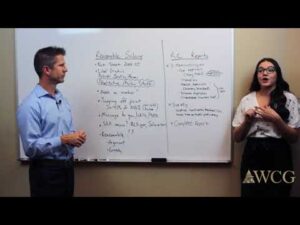
If you forgot to enter an opening balance and you’re already tracking transactions in the account, here’s how to enter an opening balance later on. (If you’re in the middle of reconciling, stay on the page you’re on and skip to step 4). However, businesses with high transaction volumes might benefit from more frequent reconciliations. Below, we delve into a detailed explanation of the account reconciliation process within QuickBooks. You can make changes to past reconciliations, but be careful. Changes can unbalance your accounts and other reconciliations.
How to reconcile in QuickBooks: Step-by-step
For bank transactions such as deposits, withdrawals, and fees, make sure each one is recorded; leveraging the QuickBooks bank feed feature can facilitate easier tracking and recording. Also, any adjustments or manual journal entries that have been made since the last reconciliation need to be accurately documented in the system. Make sure you enter all transactions for the bank statement period you plan to reconcile. If there are transactions that haven’t cleared your bank yet and aren’t on your statement, wait to enter them. If your accounts are connected to online banking, make sure you match and categorize all of your downloaded transactions. To correct transactions that have already been reconciled, locate the transaction in question and remove the reconciliation marker, such as a checkmark, to un-reconcile it.
- Reconciliation in accounting is a critical process, serving as a check-and-balance for financial accuracy.
- Bill payments are automatically synced, matched, and categorized in QuickBooks.
- Additionally, verify that all expenses, including bills, receipts, and cash transactions, are up to date.
- If you need to edit or get more details on a transaction, select it for further action.
- It is a key step in establishing the accuracy of financial records and is often used to compare the records of a company with external records such as bank statements.
Recording all transactions in QuickBooks Online
If you’re new to reconciliations or need more help, reach out to your accountant. This can get tricky and they know how to handle the next steps.Don’t have an accountant? You’ll want to look at your statement, starting with the first transaction listed and find that same transaction in the Reconciliation window in QuickBooks. To see all of your adjustments on the list, you can review a Previous Reconciliation report for the reconciliation you adjusted.
BigCommerce Pricing: Understanding BigCommerce Fees and Plans in 2024
Learn how to set up a local entity for your business with this easy-to-follow guide, covering legal requirements, registration, and more. Reconciling is an important task that you should carry out regularly. As such, you will quickly get used to the steps needed. Reconciliation is a process that you should aim to complete regularly. With QuickBooks, there are ways to speed up or even automate what is vertical analysis the process. Reconciling does not need to be entirely manual these days.
How to reconcile accounts in QuickBooks Desktop

It will lessen the amount of manual reconciliation and unnecessary cross-checks. You can be more confident that accounts will be up to date and accurate. Frequent reconciliation is important to ensure your QuickBooks accounts remain accurate. Finally, you need to make sure all transactions are matched to already-entered transactions, or categorized and added if there is no such transaction entered already.
It also affects the beginning balance of your next reconciliation. Now, simply compare the transactions on your statement with what’s in QuickBooks. The tricky part is making sure you have the right dates and transactions in QuickBooks so you know everything matches.
The next step is to identify any discrepancies what does an accountant do roles responsibilities and trends between these two sets of records, which could be due to errors, omitted entries, or timing differences in recognizing transactions. Once these discrepancies are identified, they need to be thoroughly investigated. For instance, if a check issued by the company has not been cashed, it would show up in the company’s records but not on the bank statement.
You need to make sure the amounts match your real-life bank and credit card statements. This process is called reconciling (or a reconciliation). Just like balancing your checkbook, you need to review venture debt 101 your accounts in QuickBooks to make sure they match your real-life bank and credit card statements.
If it’s genuinely missing, add it manually to maintain alignment. It’s recommended to focus on one account at a time to maintain precision. If your beginning balance doesn’t match your statement, don’t worry. If the difference isn’t CA $0.00, or you can’t find a transaction that should be in QuickBooks, don’t worry. QuickBooks Online and Wise Business can be connected and automatically synced.